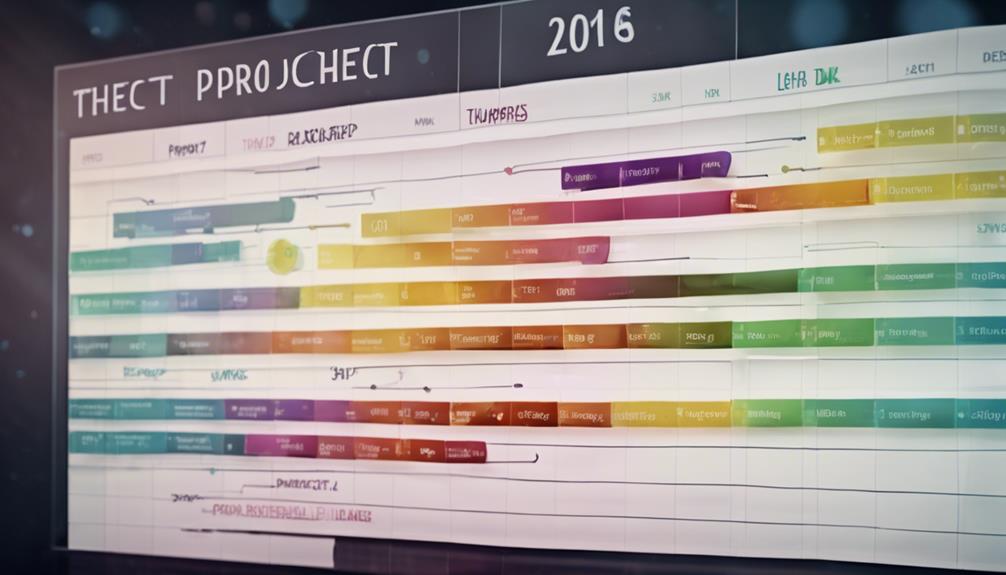Crafting a winning web design proposal requires a delicate balance of understanding the client's vision, showcasing your expertise, and clearly outlining the services you offer. As the digital landscape evolves, the importance of a well-crafted proposal cannot be overstated.
By effectively communicating your approach, pricing, and project timeline, you set the tone for a successful collaboration. Join us as we explore the essential components that can elevate your proposals from ordinary to exceptional, ultimately leading to increased client satisfaction and successful project outcomes.
Understanding Client Needs

To deliver a successful web design proposal, it is imperative to thoroughly grasp and address the specific requirements of the client. As a web design company, understanding client needs is at the core of creating a proposal that not only meets but exceeds expectations. The first step in this process is to engage in active listening during initial client meetings. By asking targeted questions and truly comprehending the client's vision, goals, and target audience, a solid foundation for the proposal is established.
Furthermore, conducting thorough research into the client's industry, competitors, and current website performance is essential. This information provides valuable insights that can be integrated into the proposed web design to ensure it aligns with the client's objectives. Additionally, collaborating closely with the client throughout the proposal development process allows for continuous feedback and adjustments to be made, resulting in a final product that is tailored to their specific needs and preferences. By prioritizing understanding client needs, a web design company can set the stage for a successful partnership and project outcome.
Showcasing Your Portfolio
Demonstrate the depth and quality of your work by showcasing a diverse and impactful portfolio. A well-curated web design portfolio is the key to impressing potential clients and demonstrating your skills in creative web design.
When showcasing your portfolio, ensure that it includes a variety of projects that highlight your versatility and expertise in different styles and industries.
Your web design portfolio should showcase your ability to create visually appealing websites that are not only aesthetically pleasing but also user-friendly and functional. Include case studies or descriptions with each project to provide context on your design process and the problem-solving skills you applied.
Make sure to update your portfolio regularly with your latest work to show that you are constantly evolving and staying current with industry trends. Including client testimonials or feedback can also add credibility to your showcased work and help potential clients understand the impact of your designs.
A strong web design portfolio is your best tool for attracting new clients and showcasing your talents effectively.
Outlining Services Offered

When outlining the services offered in your web design proposal, clearly define the scope and range of expertise your team brings to the table. Web design companies, web design and development, and web design firms should articulate their services comprehensively to showcase their capabilities effectively. Highlight the various stages of web design and development that your team can handle, such as initial consultation, wireframing, design mockups, coding, content creation, testing, and launch support.
In your proposal, emphasize your proficiency in creating responsive and user-friendly websites that align with modern design trends and best practices. Mention any additional services your web design firm offers, such as SEO optimization, e-commerce integration, or ongoing maintenance packages. By presenting a detailed list of services, you demonstrate to potential clients that your team is well-equipped to meet their web design needs from conception to completion.
Clear and transparent communication regarding the services you provide helps build trust and confidence in your capabilities as a web design professional.
Pricing and Payment Terms
Discussing the financial aspects of the project, including pricing and payment terms, is crucial to establishing a clear understanding and agreement between the client and the web design team. When web design firms present their web design company services, clearly outlining the pricing structure is essential. The proposal should detail the cost breakdown for different services such as web development, graphic design, content creation, and ongoing maintenance.
In addition to pricing, outlining the payment terms is equally important. This includes specifying the payment schedule, whether it's a one-time payment, installment payments based on project milestones, or a retainer fee for ongoing services. Clearly defining the payment terms helps in managing client expectations and avoiding any misunderstandings during the project.
Moreover, it's beneficial for web design firms to offer multiple payment options to clients, such as bank transfers, credit card payments, or online payment platforms, to facilitate a smooth transaction process. By establishing transparent pricing and payment terms, web design companies can build trust with clients and ensure a successful collaboration.
Communicating Project Timeline

How can a clear and well-communicated project timeline benefit both the client and the web design team?
A well-defined project timeline is crucial in a web design proposal as it sets clear expectations, establishes accountability, and ensures a smooth workflow for all parties involved.
By clearly outlining the project timeline in the proposal, the client gains a transparent view of the project's milestones, deliverables, and deadlines. This helps in managing their expectations and understanding the project's progression.
For the web design team, a communicated timeline acts as a roadmap, guiding them through the project phases and keeping them on track to meet deadlines. Effective communication of the project timeline also allows for better coordination among team members, leading to improved efficiency and productivity.
Ultimately, a well-communicated project timeline in a web design proposal benefits both the client and the web design team by fostering transparency, accountability, and successful project completion.
Closing With a Call to Action
Closing a web design proposal with a compelling call to action is essential to prompt the client to take the desired next steps towards project commencement. A strong call to action should clearly outline the client's role in moving forward with the proposal, such as signing a contract, making a deposit, or scheduling a kickoff meeting. By providing a clear direction, you not only guide the client but also demonstrate your professionalism and commitment to the project.
To create an effective call to action in your web design proposal, ensure that it is concise, specific, and tailored to the client's needs. Use action-oriented language that motivates the client to respond promptly. For example, you could say, 'To kickstart this exciting project, please review the proposal and confirm your acceptance by signing the attached contract by [date].' By setting a deadline and outlining the necessary steps, you encourage the client to make a decision and move forward with the project, ultimately increasing your chances of securing the win.
Frequently Asked Questions
How Do You Handle Revisions and Changes to the Design During the Project?
During a project, managing revisions and changes to the design requires clear communication, documentation of feedback, and a structured review process. It is essential to prioritize client input, maintain project timelines, and ensure the final product meets expectations.
Can You Provide References or Client Testimonials for Your Past Work?
Certainly, providing references or client testimonials for past work is essential to showcase credibility and expertise. These endorsements offer insights into the quality of services rendered, helping potential clients gauge the reliability and proficiency of the service provider.
What Happens if the Project Timeline Needs to Be Adjusted Due to Unforeseen Circumstances?
When unforeseen circumstances affect project timelines, it is essential to promptly communicate with stakeholders, assess the impact on deliverables, and adjust the schedule accordingly. Clear documentation of changes and open dialogue are key to managing expectations effectively.
Do You Offer Ongoing Maintenance and Support Services After the Website Is Launched?
We provide comprehensive ongoing maintenance and support services post-launch to ensure your website's optimal performance. Our team is dedicated to assisting you with updates, troubleshooting, and any technical issues that may arise.
How Do You Ensure the Website Design Is Responsive and Optimized for Different Devices and Browsers?
To ensure website design is responsive and optimized for various devices and browsers, we employ a mobile-first approach, conduct thorough testing on different platforms, utilize responsive design techniques, and adhere to web standards to guarantee seamless functionality and user experience.

